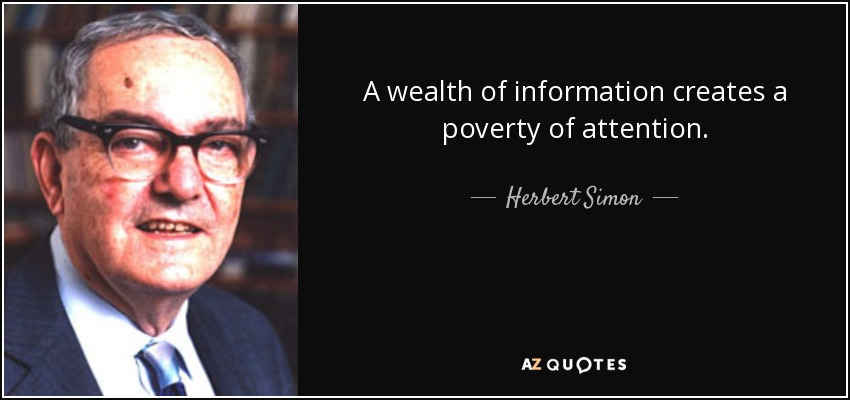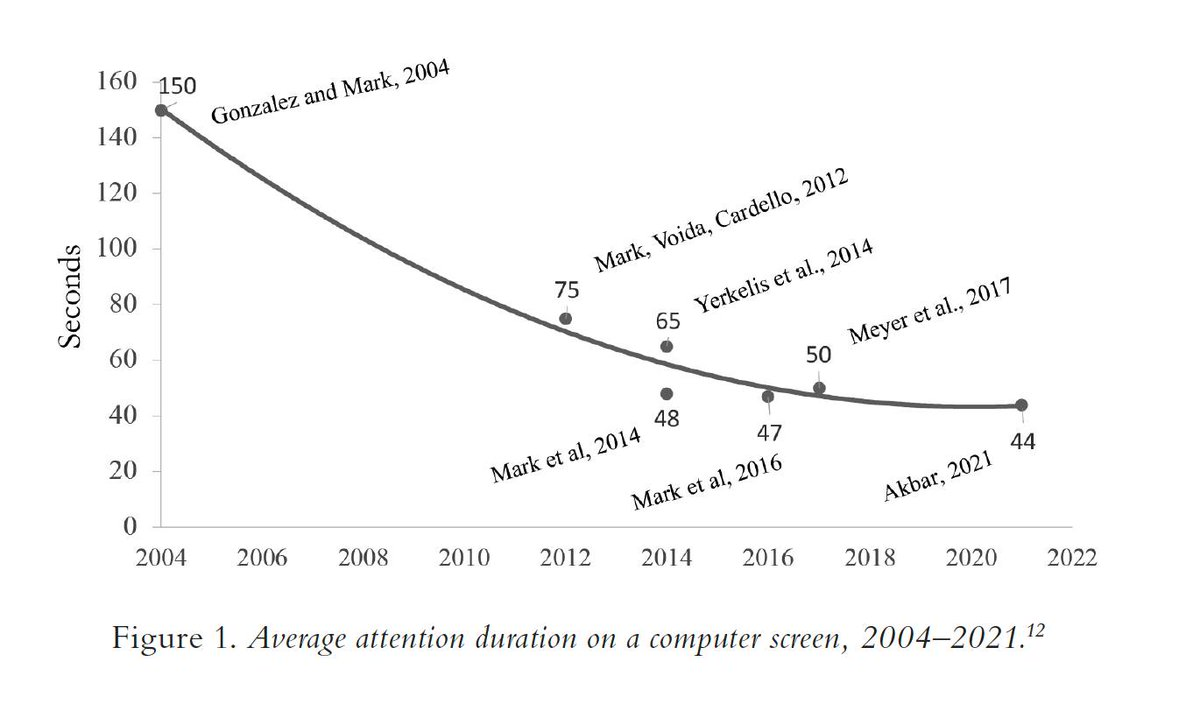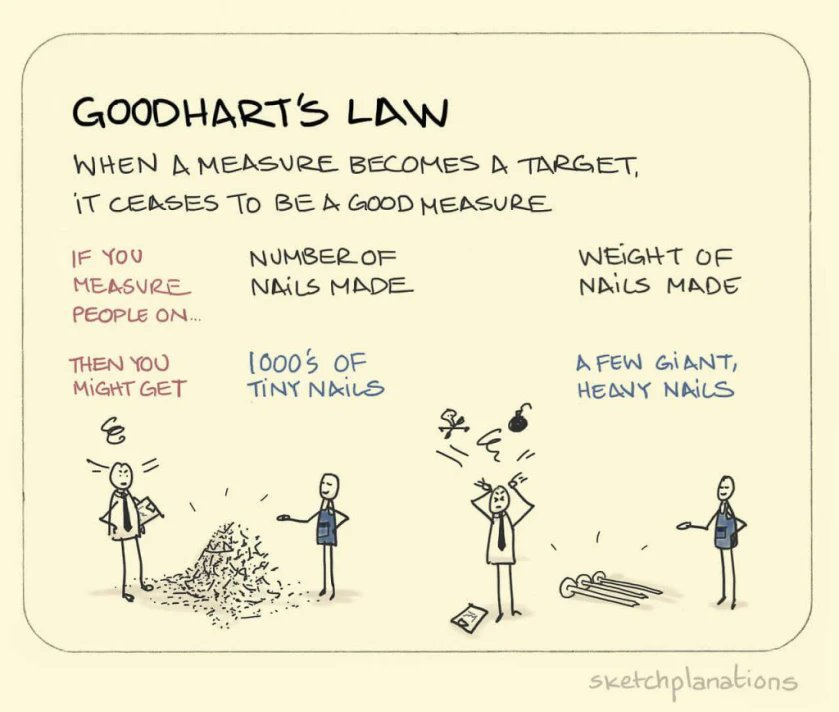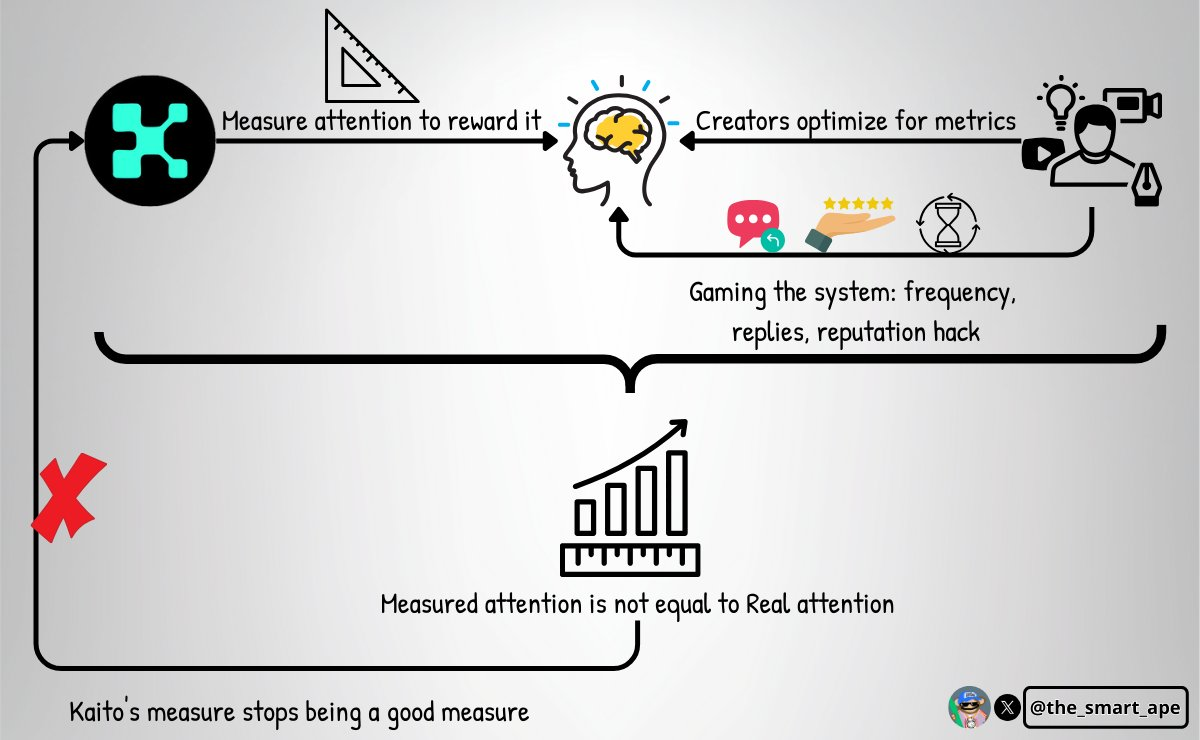Attention Is Killing Attention
I recently came across a quote from Herbert Simon that said, “a wealth of information creates a poverty of attention.”

This quote dates back to 1971, and it has only become truer with time.
With @ KaitoAI approach, attention has been turned into currency, where the value of content is measured and converted into Yaps, or mindshare.
But behind this promise, there is a paradox: in trying to focus and monetize attention, we risk exhausting it. Attention is killing attention.
1/ Context
Recent studies show that the average attention span in front of a screen has dropped to about 50 seconds today, compared to 2 minutes in the early 2000s.

And each interruption costs around 23 minutes to return to deep focus.
This data shows that the more we multiply information and signals to capture attention, the more we actually diminish it.
Psychologists call this Directed Attention Fatigue (DAF). It’s the exhaustion that occurs when the brain has to constantly filter out distractions to stay focused.
2/ The Psychology of Attention
There are many psychological studies and paradoxes around attention.
Charles Goodhart once said: “When a measure becomes a target, it ceases to be a good measure.”

Kaito’s goal is to measure attention in order to reward it. But once attention itself becomes the target, Kaito’s measurement stops being meaningful.

There are also numerous studies showing that when rewards replace intrinsic motivation, creativity and authentic engagement decline. In Kaito’s case, rewards clearly reduce authenticity.
What makes it unique is that Kaito’s reward system is highly addictive, much like casino games.
It keeps creators engaged, but it also leads to fatigue and dependency that weaken collective attention.
3/ The Promise of Kaito
It’s no surprise that Kaito is addictive for creators, it distributes significant rewards through a kind of gamified experience. In total, Kaito has distributed over $110M (excluding its own airdrop) across 200K+ wallets.

Some campaigns have allowed individual creators to earn more than $200K.
But it’s precisely this scale of incentives that kills attention. With so much money and so many rewards creators are pushed to optimize posting frequency, reply strategies, and engagement tactics instead of cultivating depth.
Add to that the fact that the lifespan of a post on X is only about 80 minutes, after that, engagement drops sharply. This creates extra pressure to post at high cadence. Some creators publish 200+ posts in a single month on one project just to farm mindshare.
As a result, readers are bombarded with repetitive content, become desensitized, and lose interest, even when the information might be useful.
I know many people who end up muting project names during Kaito campaigns just to keep them off their feed.

4/ Attention Killing
Leaderboards on Kaito don’t help either, I’ve experienced this myself.
When you’re at the top, you feel you have to stay there, so you push yourself into an exhausting rhythm to maintain your rank. It’s psychological: you’re already imagining the rewards you’ll receive.

It really does feel like a casino. You never know how much you’ll get. Sometimes the system is generous, sometimes disappointing, but it’s always addictive.
It creates a lot of joy among CTs, but also disappointment and frustration. One thing is sure: almost everyone takes this game seriously. Myself included!
This pushes us all to build gaming strategies, support networks, engagement optimizations, and so on. It’s no longer about real attention, but about performing attention to win the game.
I play this game myself, so I include myself in this 😉
But I know that it comes at a cost for readers, the flow of content becomes homogeneous and repetitive, so originality loses its value.
5/ Kaito Knows This
It’s clear that Kaito understands all of this, their latest updates prove it.
But I think they could do more to reduce the “attention killing” effect (if not already done):
- taking into account actual reading time,
- rewarding uniqueness of arguments,
- encouraging diversity of sources cited,
- penalizing spam through posting delays.
I don’t know if they’ve done this already, but they could also give more weight to content that sustains deep attention (2–5 minutes of reading).
They could reward longer, more long and synthetic formats, not just viral snippets.
The problem isn’t measurement, it’s preserving attention in the long term, and that’s much harder (maybe even impossible).
Conclusion
Today, Kaito, and the broader narrative of monetizable attention, is at its peak.
But it is also showing clear signs of fatigue. Nothing lasts forever in this ecosystem; it’s certain this narrative will eventually fade. Like attention itself, it’s temporary.
Kaito’s real challenge is to keep it alive as long as possible, and that’s what they’re trying to do through their updates and development.
But just like fossil fuels, we’ve found a way to monetize a scarce resource, yet we risk consuming it faster than we can replenish it.
Just to be clear, I play this attention game on Kaito myself. Even if I only pick a few projects that I like and feel optimistic about, the game still matters to me.
I track my positions on the leaderboard, check my daily Yaps, monitor the impact of my posts on my mindshare, and so on. So I’m well-positioned to talk about it.
It’s a psychologically demanding but rewarding game for creators. But at the end of the day, I try to step back, regardless of my results on Kaito, and remind myself that what really matters is continuing to provide value, no matter what the metrics say.
Disclaimer:
- This article is reprinted from [the_smart_ape]. All copyrights belong to the original author [the_smart_ape]. If there are objections to this reprint, please contact the Gate Learn team, and they will handle it promptly.
- Liability Disclaimer: The views and opinions expressed in this article are solely those of the author and do not constitute any investment advice.
- Translations of the article into other languages are done by the Gate Learn team. Unless mentioned, copying, distributing, or plagiarizing the translated articles is prohibited.
Related Articles

The Future of Cross-Chain Bridges: Full-Chain Interoperability Becomes Inevitable, Liquidity Bridges Will Decline

Solana Need L2s And Appchains?

Sui: How are users leveraging its speed, security, & scalability?

Navigating the Zero Knowledge Landscape

What is Tronscan and How Can You Use it in 2025?
